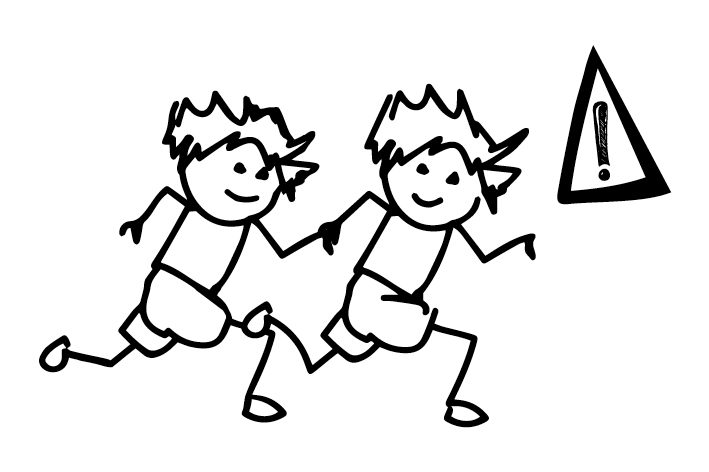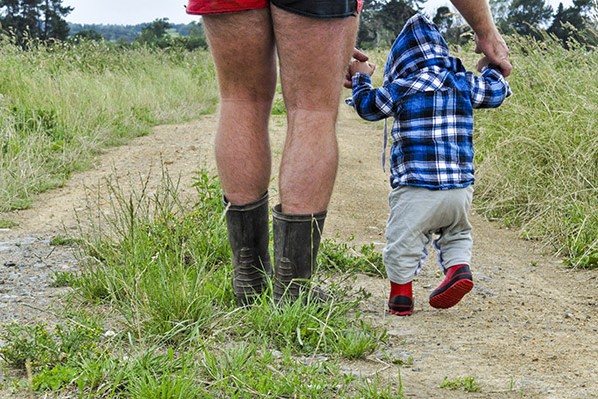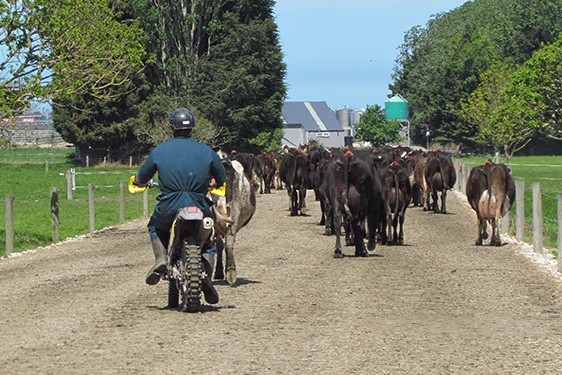Having conversations with your children is important because the fact is … people are dying on our farms, Harriet Bremner says.
“We die on our farms. A simple tragic fact. We can make excuses about why that happens, we can blame variables beyond our control, and we can wrongly assume it won’t happen to us or anyone we know. The statistics tell us otherwise.”
Summer holidays are coming to an end and the summer has been full of farming, family and hopefully some time off-farm for some fun!
In this column I want to cover how we talk to our children about how to stay safe when they are out and about on the farm, whether they are cruising around on their own little motorbike or helping mum and dad out.
I am going to share with you a mother’s story about her son and give you some tips on how to start the conversations with your children so they can make good decisions. These are the ones we don’t even think about having with them just simply because traditionally they have not been talked about or we haven’t thought of it as being at the top of the priority list.
I have heard many an adult say to their child something like this – ‘don’t stand there’. While well-intended and you know the reason for not wanting your precious child to stand in the blind spot of a tractor in the yard, it leaves the child wondering ‘why?’
For example, the blind spot behind a tractor … do your children really know what this is or what could happen to them if they stood in it? This blind spot picture out of my ‘Be safe, Be Seen’ book has been carefully illustrated to demonstrate to even young children what it is and also prompts the conversation that can be hard to start. Use this picture and story to help you have these conversations.
My top tips on how to have these conversations with children:
 Always explain the ‘why’ when you have a conversation with your children – don’t leave them wondering, because they are inquisitive creatures.
Always explain the ‘why’ when you have a conversation with your children – don’t leave them wondering, because they are inquisitive creatures.- Do not assume that other children coming over to play or visitors to the farm have the same understanding as you do about the risks. Get your children to explain the dangers they face – this is both fabulous learning for the visitors and your children will love taking charge! I am not talking clipboards and policies, I am talking real-life practical things we deal with every day.
- Find those teachable moments when you are on the farm e.g. Stop and ask the child: ‘What could go wrong here? What do we need to do to make sure this does not happen?’ Expecting your child to think and answer the question helps them to adopt a behaviour change over time if you do this regularly. They will then develop into an adult who is automatically able to assess a situation by stopping and thinking before they do anything. This can save a life.
- Keep your conversations literal and practical. If you are talking about blind spots you can take some time to mark this out behind a real tractor. Put a bucket in this space and sit the child in the driver’s seat to show them that the driver simply cannot see them if they stand there. Then get an adult to reverse over the bucket to show them what could happen if you stood in that spot. This applies to all vehicles.

- YOU ARE THE EXAMPLE! If you expect your child to wear their helmet when riding their motorbike then you need to be wearing yours. If you don’t, you are sending them the message that adults are immune to harm and this is confusing when you want to keep them and yourself safe long term. Same thing goes for seatbelts – buckle them up and buckle yourself up – a two-second click can and does save lives so save yours and your children’s by wearing them on the farm as well. No one is bullet-proof and we need to make sure children are aware that their decisions can be good ones or deadly ones.
- Teach your children to use their ‘Think Safe Brain’. Cheesy as it sounds, it can be applied to any situation you find yourself in. We simply cannot teach every single situation our children will be faced with on the farm in their lives but we can teach them to switch on that ‘Think Safe Brain’. This gives them the ability to stop and think about something before doing it. You can then use it in any situation and you will find your children will pick it up quickly and enjoy using it.
This concept needs to be taught – the child must have a true understanding of what it means to use their ‘Think Safe Brain’. You need to spend time teaching this through conversations. Check out: ‘Be Safe, Be Seen’. You can get your copy from www.gurtandpops.com. Once taught, it can be applied and used in any situation you are in on the farm.
- Think about it… when your child becomes a teenager and young adult, would you want them getting into a car with another driver and not knowing how to assess the situation? For example, no one else in the car is wearing their seatbelt and there is peer pressure to do the same but … you have taught your child to be able to make the right decision no matter where they are or what they are doing. Again, another lifesaver.
I hope that you are feeling rather inspired to go out and start some interesting conversations with your children on the farm. This is also a great way to remind yourself of the dangers of the job you do on a daily basis as we sometimes forget how risky what we do really is.
I urge you to lead by example, be the parent who wants to keep their family as a whole unit together living the farming dream. I know myself, there was no better childhood to be had than being in the yards, mustering on horses or helping cut up a mutton, so always make the right decision to keep you and your family safe.
Please get in touch at harriet.bremner@saferfarms.
Be safe Be seen poster
Download the poster to hang on your children’s wall and talk about it regularly (right click on the poster and choose ‘Save Image as’).
A3_Poster_Be_Safe2C_Be_Seen_V3_FINAL_COPY__
Be safe be seen worksheet
Download this empty poster worksheet for your children to fill in themselves with all the hazards they can think of on the farm.
A3_Poster_Be_Safe2C_Be_Seen_BLANK_EXERCISE
‘We die on our farms. A simple tragic fact’.
Board member of Safer Farms, vice-president of Federated Farmers NZ, and a mother, Karen Williams has her very own story that she shares below to help spread the message about the importance of wearing a seatbelt onfarm. Read her story and ‘make it click’ whenever you are driving or the passenger in a vehicle to keep yourself and your loved safe.
“We die on our farms. A simple tragic fact. We can make excuses about why that happens, we can blame variables beyond our control, and we can wrongly assume it won’t happen to us or anyone we know. The statistics tell us otherwise.

“Some time ago on the eve of Christmas my son was a passenger in a side-by-side that was driven into a bull hole hidden by long grass. He was not wearing a seatbelt and the sudden halt of the vehicle resulted in his face and throat smashing into the dashboard, and a concussion and serious windpipe injury resulted. He was not doing anything inappropriate in the vehicle, but it was quite clear that his injury would have been prevented if he had been wearing his seatbelt.
“In New Zealand, we seem hell-bent on embracing the ‘she’ll be right’ approach to risk management. Even as I write this, I sense the eye-rolling by my teenage boys that Mum is taking the fun out of everything. But this inability to take seriously our responsibility to keep ourselves and those in our care safe will result in stronger controls by government, heftier prosecutions, and more families suffering unimaginable loss.
“So here we are at the beginning of a new year. And we have a choice to make. We can choose to adopt a culture of ‘farming safe’ and making some proactive decisions to support this – or we continue with the status quo and suffer the consequences.
“Make a good choice everyone.” – Karen Williams.





